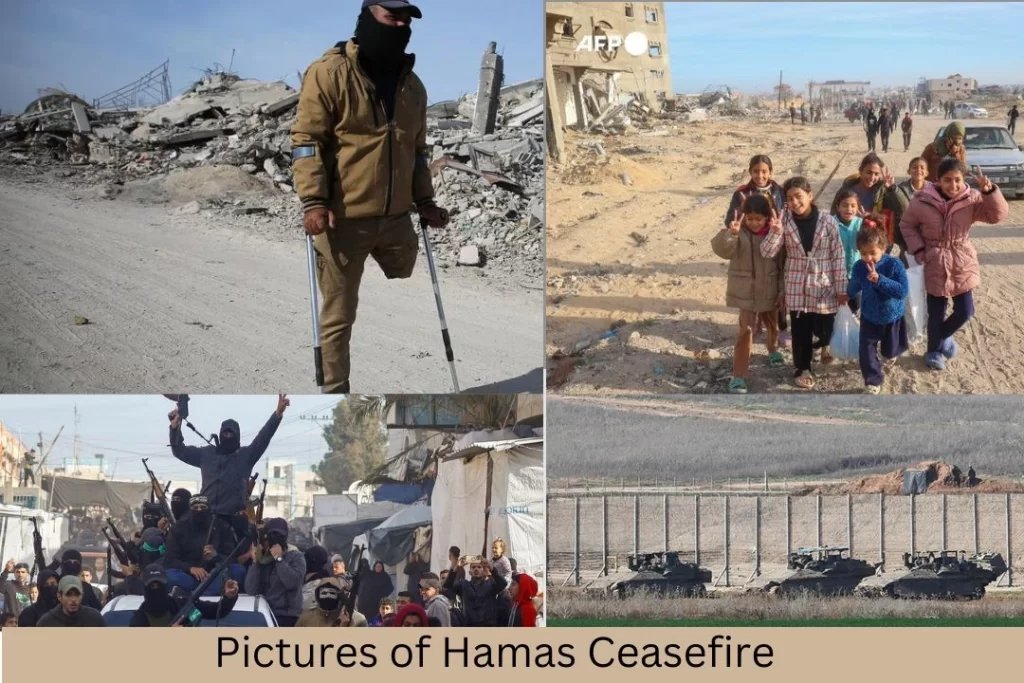In a major development in the ongoing conflict between Israel and Hamas, a ceasefire agreement was enacted on Sunday, January 19, 2025, following a delay of nearly three hours. The truce, initially scheduled to begin at 6:30 a.m. GMT, was postponed to 9:15 a.m. GMT due to last-minute negotiations and conditions set forth by Israeli Prime Minister Benjamin Netanyahu. This marked a cautious step toward ending a devastating 15-month conflict that has inflicted widespread destruction and loss of life in the Gaza Strip.
The ceasefire agreement, brokered by Qatar, Egypt, and the United States, represents a potential turning point in the Middle East’s volatile political landscape. The delay, attributed to technical issues cited by Hamas and the Israeli demand for a list of hostages to be released, underlines the fragility of the accord. Despite the delay, the truce officially took effect at 11:15 a.m. local time, with the first phase involving the release of three Israeli hostages. The released individuals include two dual nationals holding Romanian and British citizenships, according to Qatar’s Foreign Ministry.
In the hours leading up to the ceasefire, violence persisted. Israeli airstrikes reportedly killed eight Palestinians, including civilians, in northern and central Gaza. Plumes of smoke were seen rising over densely populated areas as families sought shelter from the bombardment. Gaza’s Civil Defense Agency reported 25 additional injuries in the strikes, further highlighting the ongoing risks faced by residents.
The hostilities were accompanied by political turmoil within Israel. The Jewish Power party, led by far-right National Security Minister Itamar Ben-Gvir, announced its withdrawal from the government in protest against the ceasefire deal. Although this move destabilizes the coalition, it does not dismantle Netanyahu’s government or directly threaten the implementation of the truce.
As the ceasefire was confirmed, celebrations erupted in the war-torn streets of Gaza. Despite lingering fears and uncertainty, many Palestinians began returning to their homes. Families laden with belongings made their way back to what remained of their neighborhoods, hopeful for an end to the destruction. “People are impatient. They want this madness to end,” said Ahmed Matter, a Gaza City resident.
However, the challenges of rebuilding remain monumental. The conflict has displaced nearly the entire population of Gaza, with over 46,000 lives lost since the escalation began in October 2023. The ceasefire, though a welcome reprieve, is viewed by many as a temporary measure rather than a resolution to the deep-rooted issues between the two sides.
Qatar confirmed that the truce aims to pave the way for humanitarian relief, prisoner exchanges, and, eventually, a long-term political solution. The hostages released on the first day represent a fraction of nearly 100 individuals taken during the Hamas attack in October 2023, which served as the catalyst for the conflict.
Israeli forces have reportedly started withdrawing from Rafah, a southern Gaza region, signalling a de-escalation of ground operations. However, Prime Minister Netanyahu warned that the ceasefire is conditional and temporary, emphasizing Israel’s right to resume military action if necessary. “The current arrangement is part of a phased process. If Hamas violates the terms, we will not hesitate to act decisively,” Netanyahu stated.
The ceasefire has sparked cautious optimism among international observers, with many acknowledging its potential to reduce immediate suffering in the region. However, experts warn that lasting peace will require addressing the underlying causes of the conflict, including territorial disputes, political divisions, and humanitarian crises.
As displaced residents trickle back to their homes and efforts to exchange hostages continue, the world watches closely. Will this ceasefire hold, or will it prove to be another fleeting pause in an enduring cycle of violence? For now, the people of Gaza and Israel cling to a fragile hope for a better tomorrow.





